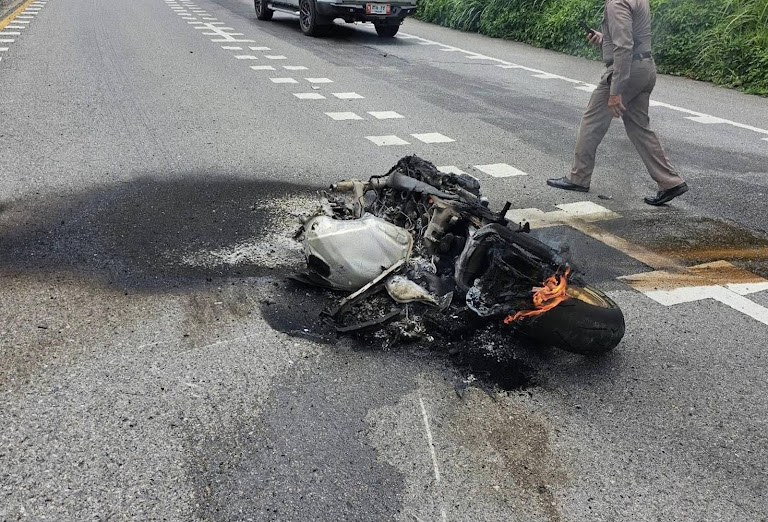Thailand’s Fiery Motorcycle Death Exposes Deadly Cost of Reckless Progress
A decapitated biker exposes Thailand’s tolerance for preventable deaths, fueled by speed, consumerism, and lax regulations.

A life extinguished in a fiery instant. Kritsada Ketprasatkon, 33, decapitated after losing control of his motorcycle and colliding with a roadside barrier near Chiang Mai. The Bangkok Post reports the gruesome details. But beyond the stark, sensational headlines lies a chilling question: are we, as a society, complicit in tragedies we frame as accidents?
This wasn’t just a motorcycle accident; it was a systems breakdown, a fatal consequence of choices we actively, if unconsciously, endorse. Consider the implicit bargain: the intoxicating rush of speed offered by powerful motorcycles, aggressively marketed as symbols of freedom and achievement, versus the statistically predictable carnage on roads manifestly unprepared for them. But it’s not merely about individual risk calculations. It’s about the incentives — often economic — that subtly shape and distort those calculations. It’s about the infrastructure of desire that profits from precarity.
The rise of “big bikes” in Thailand, and across the developing world, isn’t a simple story of upward mobility. It’s a complex brew of aspirational consumerism fueled by Western marketing, inadequate road safety regulations bought and paid for by lobbying, and a cultural acceptance of risk that borders on fatalism. As Dr. Teo, a professor of urban planning at Chulalongkorn University, put it to me recently, “We talk about the 'Thai Smile,” but sometimes that smile masks a deep-seated tolerance for preventable death. Modernization shouldn’t be measured in horsepower, but in lives protected."
We’ve seen this movie before. The early days of the American automobile were a bloodbath. In 1927, the US saw nearly 26,000 traffic fatalities—a rate of over 24 deaths per 100 million vehicle miles traveled. Only then did the federal government begin to seriously grapple with road safety. It’s a recurring pattern: technology rockets ahead, leaving our social and regulatory frameworks scrambling to catch up, often years or decades too late.
Global road death statistics are a damning indictment. The World Health Organization reports that low- and middle-income countries account for 93% of the world’s fatalities, despite having only 60% of the world’s vehicles. Speed, alcohol, and helmet usage are immediate factors. But the deeper question is: what political and economic forces perpetuate the conditions that normalize these behaviors? What biases in resource allocation consistently undervalue human safety?
“Police said the rider appeared to have lost control while navigating a curve, causing the bike to veer off the road and collide with the barrier.”
The “lost control” explanation obscures more than it reveals. How was that curve engineered? Were there cost-cutting measures during construction that compromised safety? How aggressively is speed enforced in that area? And crucially, why are roadsides still lined with rigid steel guardrails — known to be lethally unforgiving to motorcyclists — when safer, energy-absorbing alternatives exist?
So, what is the real solution? Not simply blaming individuals or calling for better driving. It’s a fundamental re-evaluation of our priorities. Investing in robust public transportation networks that offer genuine alternatives to motorcycles, enforcing strict regulations on vehicle sales and usage, and tackling corruption that undermines road safety initiatives. But more profoundly, it requires confronting the values — the prioritization of speed over safety, profit over people — that underlie this tragic calculus. Kritsada Ketprasatkon’s death should not be filed away as an isolated incident. It demands a reckoning. A reckoning with the price we are willing to pay for progress, and who ultimately bears that burden.









